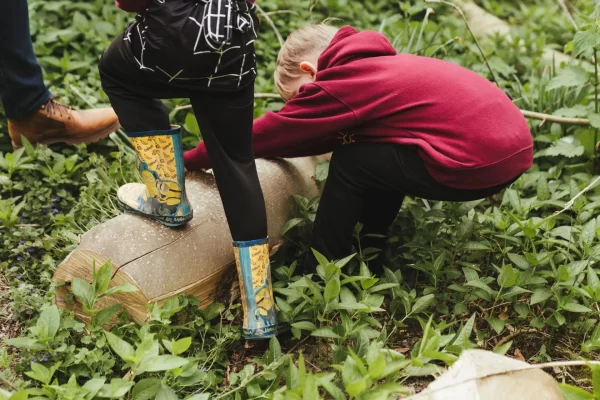-

Newsfeed
The British Association of Play Therapist's Annual Conference

Workshop 1: It’s in Our DNA – Working in Nature For Sensory & Embodiment Reconnection in Play Therapy
I attended the recent annual conference for the British Association of Play Therapists, and this are some thoughts on the first workshop I attended.
While this workshop hasn’t led me to think I need to break out into the great wilds of Kent for my play therapy sessions, it did make me think of the positive investment in the outside spaces we have at Caldecott; the inclusion of Forest School, horse riding, growing plants, fruits, and vegetables at school, the importance of physical play (through swinging, climbing, and running), and the annual camp that all our young people have the opportunity to experience.
The workshop presenters spoke of our modern year being divided by commercial messages to buy one thing or another – Easter eggs appearing the minute Christmas decorations leave the shelves, for instance – when the world has its own rhythms of seasons, as well as yearly harvests. Nature provides yearly patterns, and if we can in some way reconnect to these patterns rather than be dragged along by commercial pressures, we may find it regulating and calming.
The presenters encouraged the group to listen to descriptions of yearly events and see what we are drawn to. In the same way that we consider the behaviour of children as keys and clues to what they need and what they are communicating, what we are drawn to may be informative, interesting, or helpful to us.
As a group, we created a mandala. We each chose eight of one item and placed them at equal points around the circle. The result was simple yet complex, and both beautiful and enchanting. I would love to recreate this with children.
The session finished with an excerpt from Naoki Higashida’s book, The Reason I Jump, and one line particularly struck me; “Nature calms me when I am furious and laughs with me when I am happy.”
Nature is regulating for both our highs and lows, and everything in-between. This makes evolutionary sense, and is a resource just outside our door. As Bruce Perry’s model (2006) seems to indicate – “Regulate, then relate, and then reason.” Regulation is the foundation for our ability to build effective relationships, and through relationships comes the further development of regulatory ability – and then, once in a relationship, children can be supported to reason.
The presenters said one final point; fire, and our response to it, is in our DNA. It makes evolutionary sense, having been embedded in us for thousands of years – so bring on camp, where we can toast marshmallows around the hypnotic flame of the campfire! Let it connect to something deep in our DNA!
